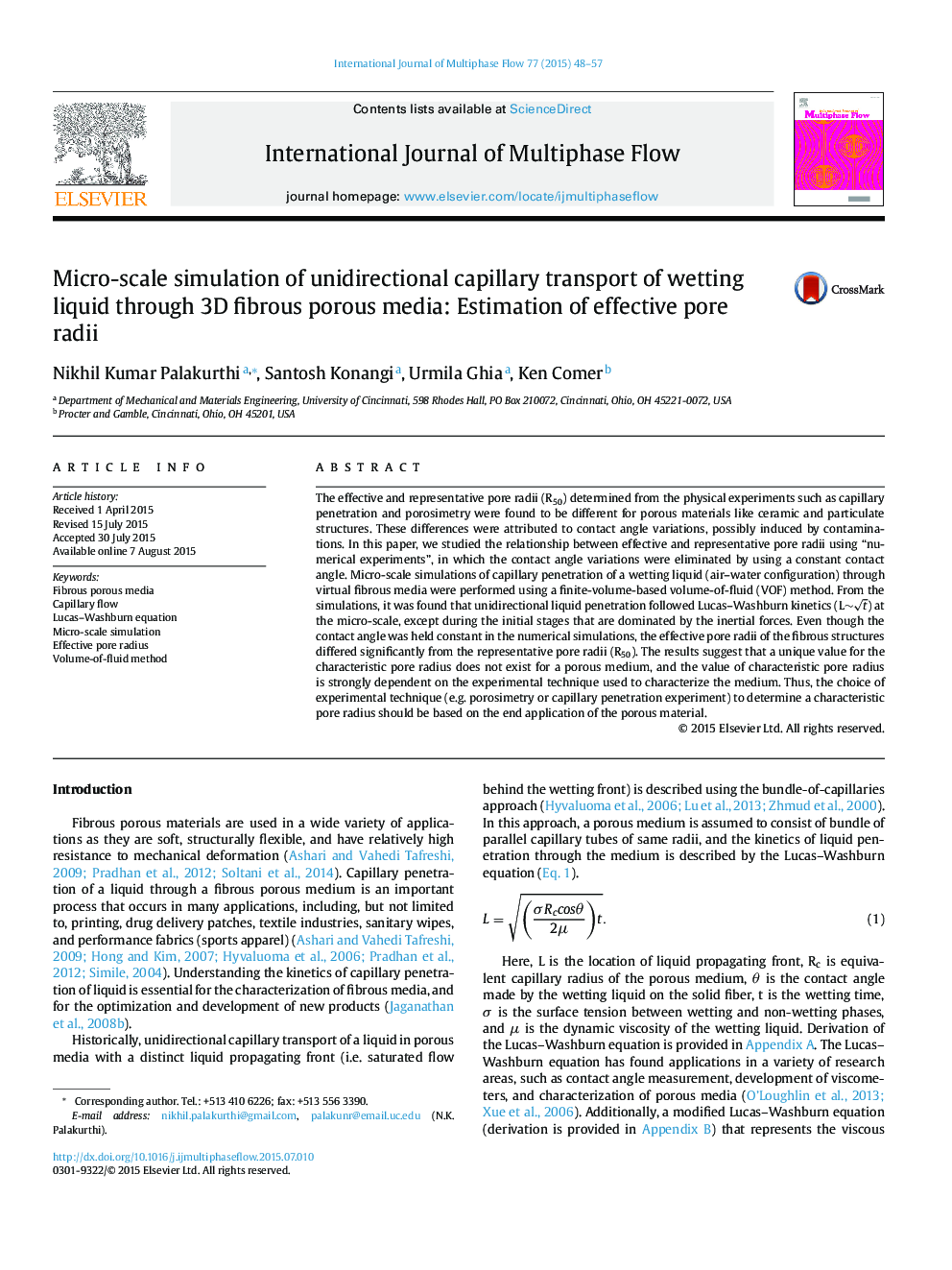| Article ID | Journal | Published Year | Pages | File Type |
|---|---|---|---|---|
| 667573 | International Journal of Multiphase Flow | 2015 | 10 Pages |
Abstract
The effective and representative pore radii (R50) determined from the physical experiments such as capillary penetration and porosimetry were found to be different for porous materials like ceramic and particulate structures. These differences were attributed to contact angle variations, possibly induced by contaminations. In this paper, we studied the relationship between effective and representative pore radii using “numerical experiments”, in which the contact angle variations were eliminated by using a constant contact angle. Micro-scale simulations of capillary penetration of a wetting liquid (air-water configuration) through virtual fibrous media were performed using a finite-volume-based volume-of-fluid (VOF) method. From the simulations, it was found that unidirectional liquid penetration followed Lucas-Washburn kinetics (Lâ¼t) at the micro-scale, except during the initial stages that are dominated by the inertial forces. Even though the contact angle was held constant in the numerical simulations, the effective pore radii of the fibrous structures differed significantly from the representative pore radii (R50). The results suggest that a unique value for the characteristic pore radius does not exist for a porous medium, and the value of characteristic pore radius is strongly dependent on the experimental technique used to characterize the medium. Thus, the choice of experimental technique (e.g. porosimetry or capillary penetration experiment) to determine a characteristic pore radius should be based on the end application of the porous material.
Keywords
Related Topics
Physical Sciences and Engineering
Chemical Engineering
Fluid Flow and Transfer Processes
Authors
Nikhil Kumar Palakurthi, Santosh Konangi, Urmila Ghia, Ken Comer,
